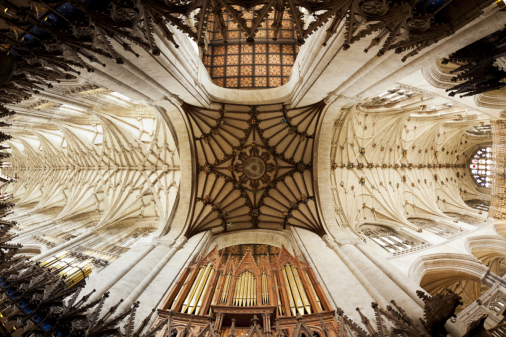
It had been a bad morning. A day when nothing seems to be going right – and a lot wrong. One solution: retreat to a quiet place and look at something totally unrelated. My eyes alighted on a copy of Crockfords in the library. Out of mild interest I flipped through to the page listing the Bishops of Winchester – my birthplace – and counted them. At the time, some forty years ago, there were ninety-eight and "One Hundred Bishops" struck me as a good title for my new book on this topic, The Winchester Powerhouse.
In the decades that followed I researched names I had heard since childhood – and many I had not. I soon discovered that no one had looked at the whole list since the early 1820s when the Reverend Stephen Hyde Cassan had collated all that he could find and published in 1827. High time, therefore, for an up to date appraisal.
To some, the writing of my book became an obsession, not least to members of my family. 'Where is he?' 'He's in the study – with his bishops' would come the almost mocking reply. I became a well-known face in county record offices, at the National Archives and, perhaps, best of all, at Lambeth Palace Library. Naivety was replaced with knowledge in depth and a growing appreciation of the important place the Winchester prelates occupied in English history.
Early on, I discovered the significant role that the evangelists, notably St Berin (Birinus), played in the re-introduction of Christianity into Saxon Albion during the 7th century - arguably more effective than St Augustine of Canterbury and the many Celtic saints in the North. The secret to the Winchester success was the symbiotic relationship forged between the Wessex kings and their spiritual advisers. Out of appreciation for the advice a well-educated bishop could provide and the support he could engender, the king passed large areas to episcopal ownership, not least in those parts of his realm threatened by neighbours. By the time the Danes were engulfing the very existence of Wessex, the Church had established a parochial network which could be used to rally forces strong enough to face down the Norse invaders. The battle of Edington in AD 878 would not have been won by Alfred the Great without this facility.
Study of St Berin's successor, Agilbert, revealed a bishop's frequent involvement in crucial diplomacy. The Synod of Whitby in AD 664 that united the early English Church did not just happen. In the several years before, Bishop Agilbert visited the northern petty kingdoms to persuade their rulers that Roman, not Celtic, practices should be followed. The Synod merely put this stamp on the proceedings and the resulting agreement stuck.
By the 10th century, the Old Minster in Winchester had become not just a royal mausoleum; its scriptorium was a library of ancient texts which underpinned government proceeding in both the State and the Church. The monks and secular clerks who lived there were increasingly called on to administer the Wessex court which from Alfred's day was usually based in Winchester. His worthy successors developed machinery of government in which the chief minister, the Chancellor, was invariably the Bishop of Winchester. Well before the Norman Conquest, England had been united under the Wessex kings as a unitary state which held together even though assailed by almost continuous invasion by Norsemen.
One other salient contribution. It was episcopal influence at the end of the 7th century that raised the age of criminal responsibility from 12 to 16 and introduced a humane dimension to social order. From then until the Norman Conquest law courts were presided over by the bishop and an ealdorman - a high-ranking official in Anglo-Saxon England who was appointed by the king - as equals. The king's law and God's law were unified, a unique and benevolent feature of Saxon England that has been too often undervalued.
Anthony Paice is the author of The Winchester Powerhouse, out now priced £16.99.









